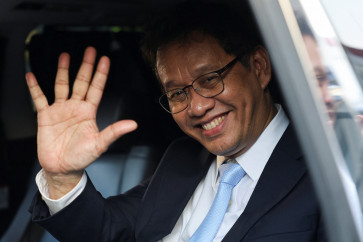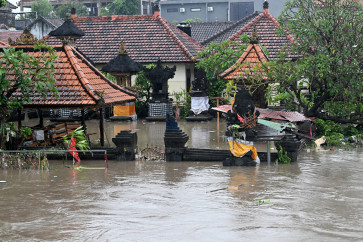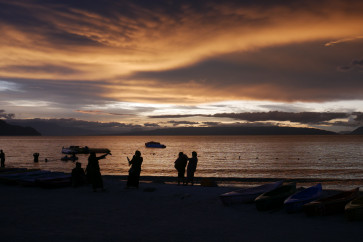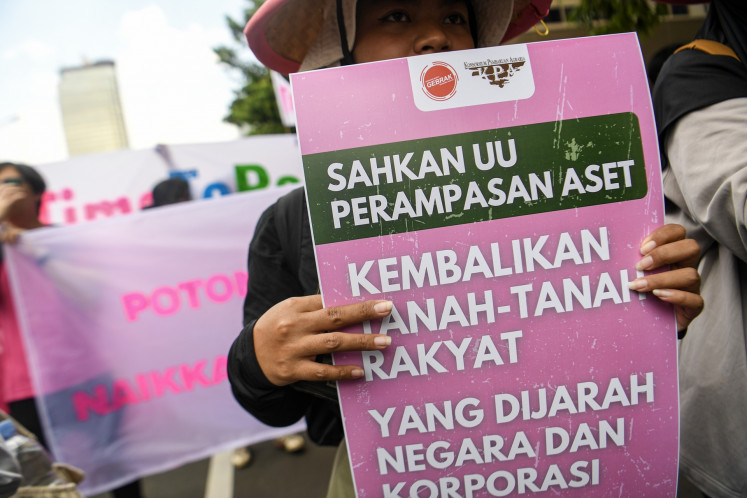Popular Reads
Top Results
Can't find what you're looking for?
View all search resultsPopular Reads
Top Results
Can't find what you're looking for?
View all search resultsFuture of dance unmasked
Change text size
Gift Premium Articles
to Anyone
No one can fight globalization and the best one can do is to harness new technologies to support a traditional art form.
When the electric lights died last Sunday during a mask dance in Pajeng, the audience was transported back to the days of flickering lamps and shadows deep on the stage. With a clunk the floodlights failed, leaving dancers in pitch black night, the bells on their ankles ringing brightly in the sudden silence. Within seconds pale torches from handphones lit the stage, almost as if a swarm of fireflies had joined the audience, which had collectively turned to mobile technology to illuminate the way for the dancers.
This unexpected marriage of ancient art and technology was precisely what the organizers of the 2015 Indonesian Mask Festival and Exhibition had hoped for, says I Wayan Dibia, professor of dance at Denpasar’s prestigious fine arts institute, the ISI. Along with several other masters of Indonesian mask and dance culture, Dibia led seminars and workshops during the festival. Hosted by Gianyar Culture Agency, Dibia says the two-day event, based in Mas village, aimed at reconciling the fact of globalization with traditional art forms.
 often sponsored by Islamic radical groups back home.
often sponsored by Islamic radical groups back home.
“Currently we are in the midst of a global culture and this is penetrating our traditions."
"We want to bring the attention of the younger generation back to our culture to balance this out. No one can stop globalization, but with events like this, we can strengthen ourselves and remind all people of the richness of our mask performances,” says Dibia, adding that new technologies could enhance the knowledge transfer of Indonesia’s cultural traditions.
Forgetting the stories and legends of Indonesia’s history, told through dance, would be to cast off not only the epic tales of the nation, but in Bali, the island’s personal history handed down over generations through mask dances, according to ethnomusicologist and the former rector of Yogyakarta’s Fine Arts Institute (ISI), Professor I Made Bandem.
 tes
tes
Bandem is a luminary of Indonesia’s visual arts community and he gave presentations at the three-day festival. The festival attracted hundreds of Indonesians and a smattering of foreigners to a series of evening performances in Pajeng and Mas.
“Masks are a medium of communication for Balinese people to their ancestors and gods. Mask performances denote family histories, the chronicles. So the masks can bring the past into the present within the performance,” says Bandem, who can trace his family history back to 1343 when his family was thrown (bebandem) from Java to Bali, settling in a village still named Bebandem.










